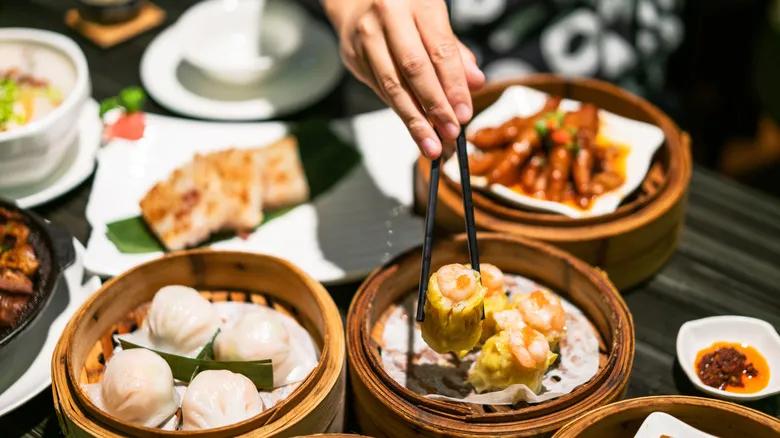Choose a concise and varied selection of dishes

Before you start preparing, it's a good idea to outline a menu plan. With the vast array of dim sum options available, narrowing it down to just a few dishes can feel daunting. Chef Lin emphasizes that it's more about quality than quantity. "We suggest selecting five to six carefully curated items," he advises.
A more concentrated selection that incorporates various flavors and textures will meet all your needs. "Including a combination of steamed, fried, and baked dishes provides diversity," Chef Lin points out, so vary the cooking methods to enhance natural versatility. While popular choices like soup dumplings, wontons, bao buns, and rice rolls are always a hit, it's also important to consider the proportions of each food category. Chef Lin recommends aiming for a distribution of 50% dumplings, 30% buns, and 20% vegetable-centric items. This framework allows for flexibility while helping you create a well-rounded brunch.
Prepare certain foods in advance

As any chef in the culinary world knows, timing is crucial, especially when it comes to a dim sum spread. Managing multiple dishes cooking at once can be challenging, so preparing in advance can significantly reduce stress. Even if you opt to make most items from scratch, many can be easily reheated. Chef Lin advises not to overcomplicate things; it's best to assemble dumplings, buns, and bao ahead of time.
The shelf life of each dish varies, but many can be stored for a considerable period. Homemade dumplings can be kept in the freezer for weeks, while bao buns can last in the refrigerator for up to five days. Don’t forget to prepare side items like sauces as well. For the hot dishes, simply "reheat by steaming just before serving to preserve freshness and aroma," says Chef Lin. After a quick steam of five to ten minutes, many of your dishes will be ready to serve.
Consider purchasing some items already cooked

There’s a unique satisfaction in creating every component from the ground up, but it’s not necessary for putting together a delicious dim sum. Chef Lin suggests that thoughtfully selecting artisanal ingredients can simplify the process — it’s all about knowing which products to choose. For a hassle-free shopping experience, Chin Lin recommends finishing off your meal with "Hong Kong-style egg tarts or sesame balls for a delightful dessert." Visit your local Asian specialty grocery store or bakery to find these treats.
Additionally, feel free to blend homemade and store-bought elements. Chef Lin supports the use of pre-made dumpling wrappers. You can also find frozen bao buns, allowing you to customize the filling for both. Even if you opt for a completely store-bought option, you can add your personal touch by using the Trader Joe's recipe hack for frozen chicken soup dumplings.
Add creative flourishes to dim sum classics
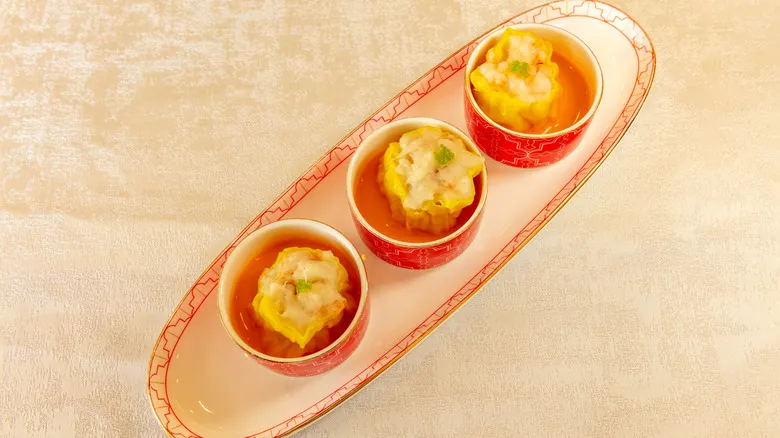
Making dim sum at home also offers a chance to incorporate unique enhancements. Just a few additional ingredients can significantly elevate your dim sum creations, leaving a lasting impression on family and friends. Chef Lin generously shares a delightful array of easy ideas. For example, he recommends transforming congee by simply garnishing it with crispy shallots or a drizzle of chile-onion sauce.
Dumplings serve as an excellent base for indulgent upgrades — all it takes is a tweak to the filling. Create a batch of champagne-infused shrimp dumplings by adding "a splash of rosé or infused champagne" to the seafood mixture, suggests Chef Lin. You can also embrace the seafood theme further by preparing rich and tender lobster dumplings. For a vegetable option, wild mushroom or truffle dumplings are sure to impress: just incorporate "a hint of truffle oil to introduce an earthy, umami flavor," advises Chef Lin. And don’t overlook the potential for enhancing siu mai, either. He suggests, "Incorporate a bit of yuzu zest or a touch of foie gras into shrimp or pork siu mai for added depth."
Note presentation and pacing
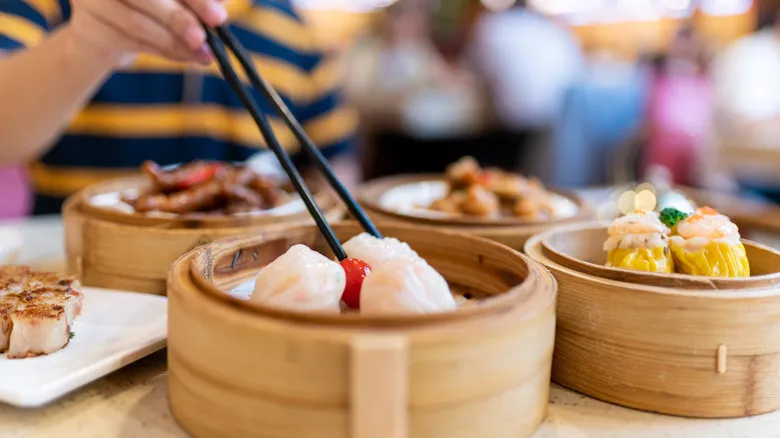
At last, with all the culinary components ready, it’s time to consider the serving style. The way the food is presented significantly influences the dining experience—dim sum restaurants follow a specific rhythm. Chef Lin encourages us to approach the coursing of dishes similarly to other elaborate meals. He recommends "starting with lighter options like seafood dumplings and gradually moving to richer buns for an authentic touch." Dim sum is not intended to be a rushed meal; rather, it should be a leisurely experience. Therefore, intervals between dishes are anticipated—these breaks allow guests to socialize.
To further enhance the traditional ambiance, it’s wise to have steamer baskets on hand. Chef Lin emphasizes that these vessels play a crucial role in presentation, and simply transferring the food into them adds to the authenticity. The enclosed wooden containers serve a practical purpose as well, as "using bamboo steamers at home keeps the food warm," he explains. When you fill these baskets with thoughtfully prepared dishes, you create an unforgettable at-home dim sum brunch experience.
Recommended
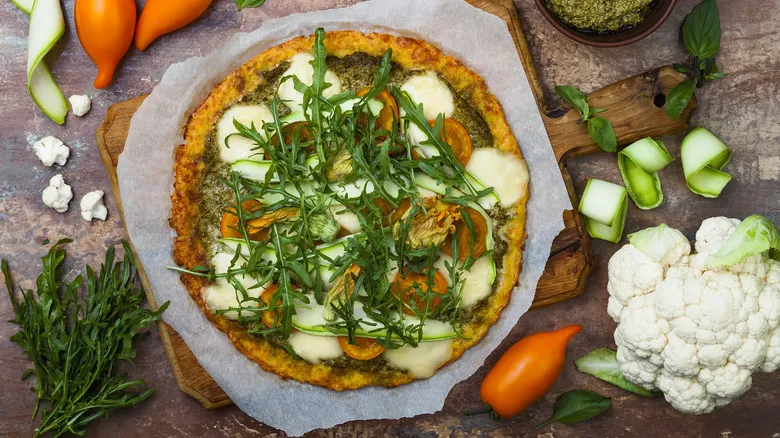
15 Underrated Pizza Toppings You Should Add To Your Pie

Stop Using Your Knife As A Scraper Or Else You Won't Have It Very Long
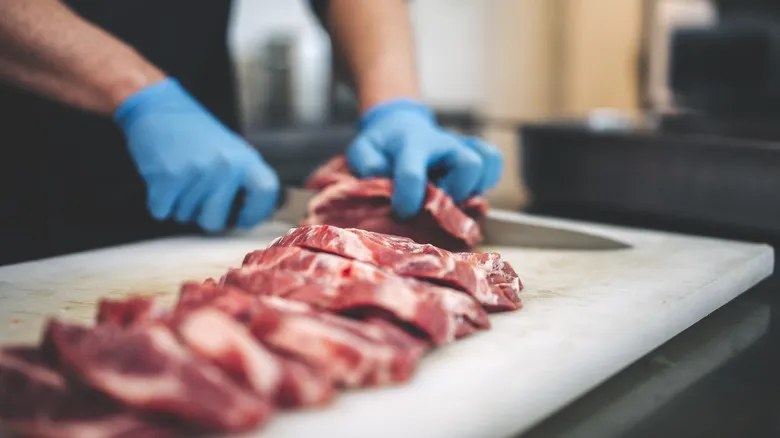
The Easy-To-Make Mistake That Will Start Your Pork Dishes Off On The Wrong Foot

The Common Mistake That Will Ruin The Texture Of Your Clams
Next up

